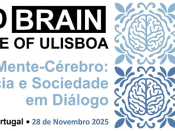Por Rosina Savisaar (Mondego Science).
For many of us, the desperate struggle for significance is what analyzing data boils down to in practice. But is it possible to do statistics differently? May it perhaps even be better to do statistics differently? P-values, confidence intervals and statistical tests are primarily associated to a school of statistics referred to as frequentism. In the vast majority of introductory courses, this is what is taught. Many of us never get exposed to anything else. Although this paradigm is not without its merits, there is also an alternative school of thought, known as Bayesian statistics. Bayesian statistics is a way of analyzing data that was routine during the 19th century, fell into disgrace for most of the 20th, and has seen a remarkable revival during the 21st. For decades, proponents of this paradigm have claimed that it is more intellectually coherent, more powerful and easier to learn for beginners than its frequentist alternative. In this talk, we will walk through a simple example of how data analysis works in this paradigm, in a way that should be accessible also to complete beginners in statistics. In the process, we will try to understand how this way of looking at data and probabilities differs from the frequentist approach. Finally, I will argue that there is much to gain in introducing these methods from the very start, in the very first introductory statistics courses that researchers take during their training.
Transmissão via Zoom.


















